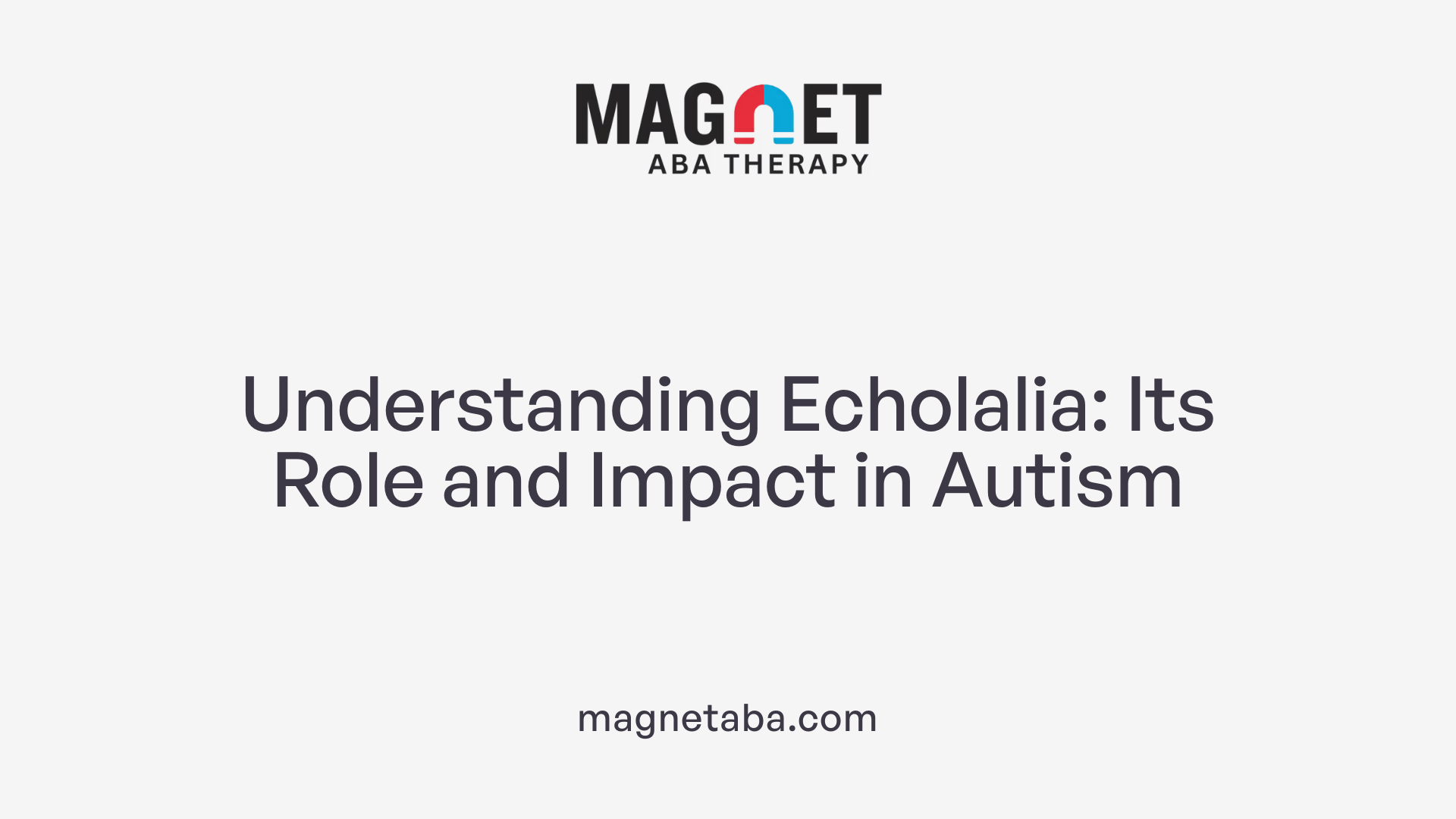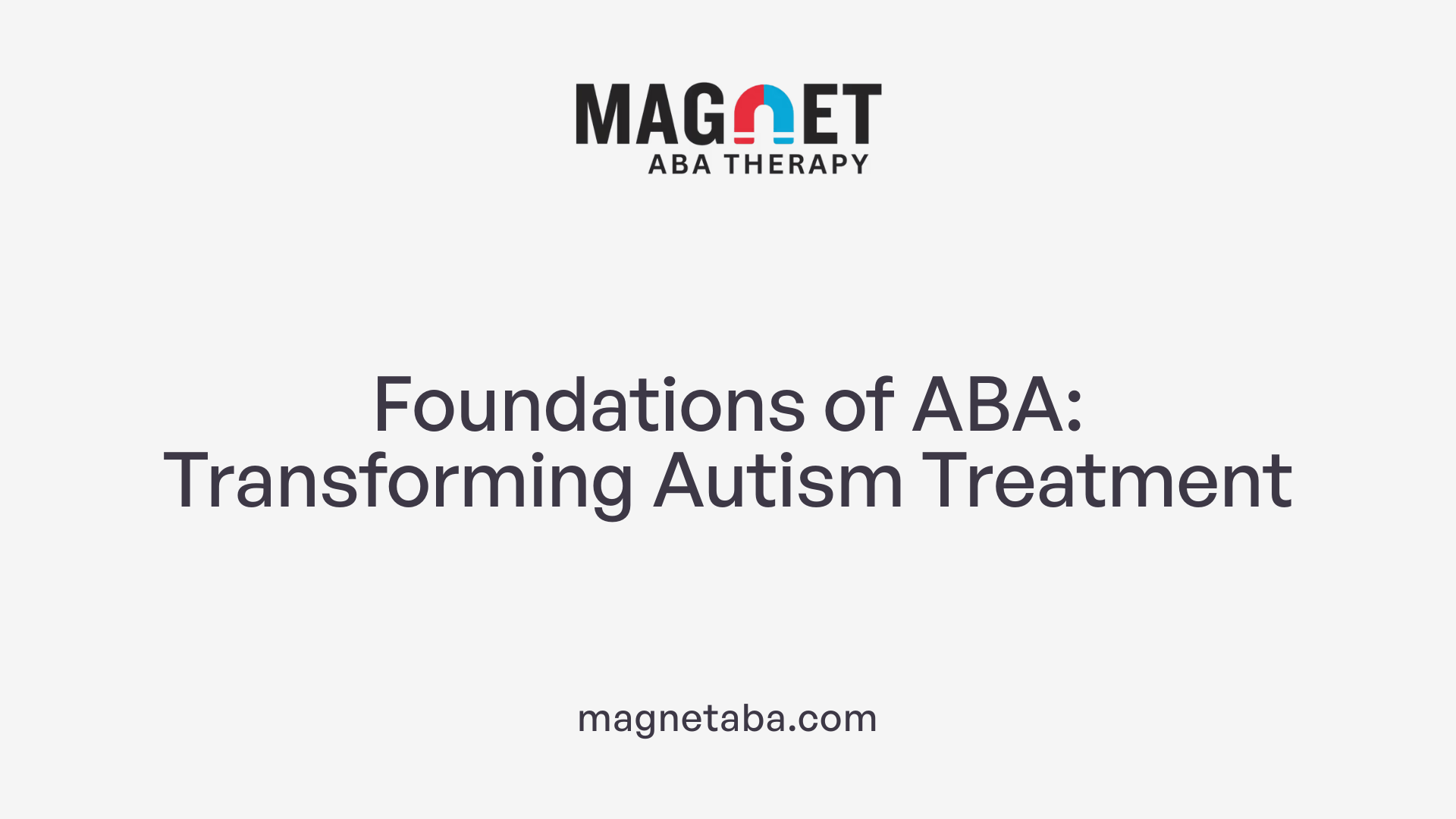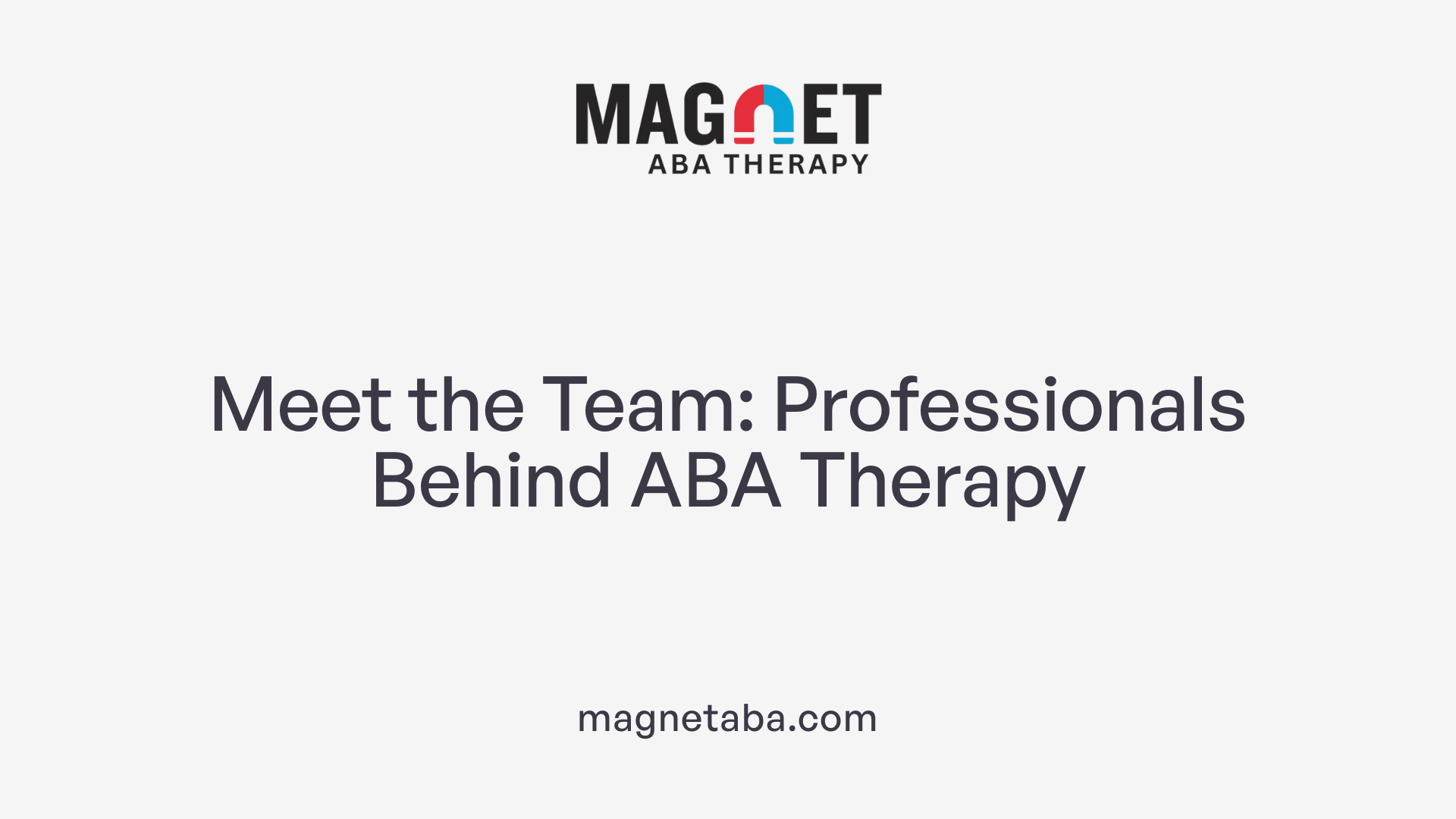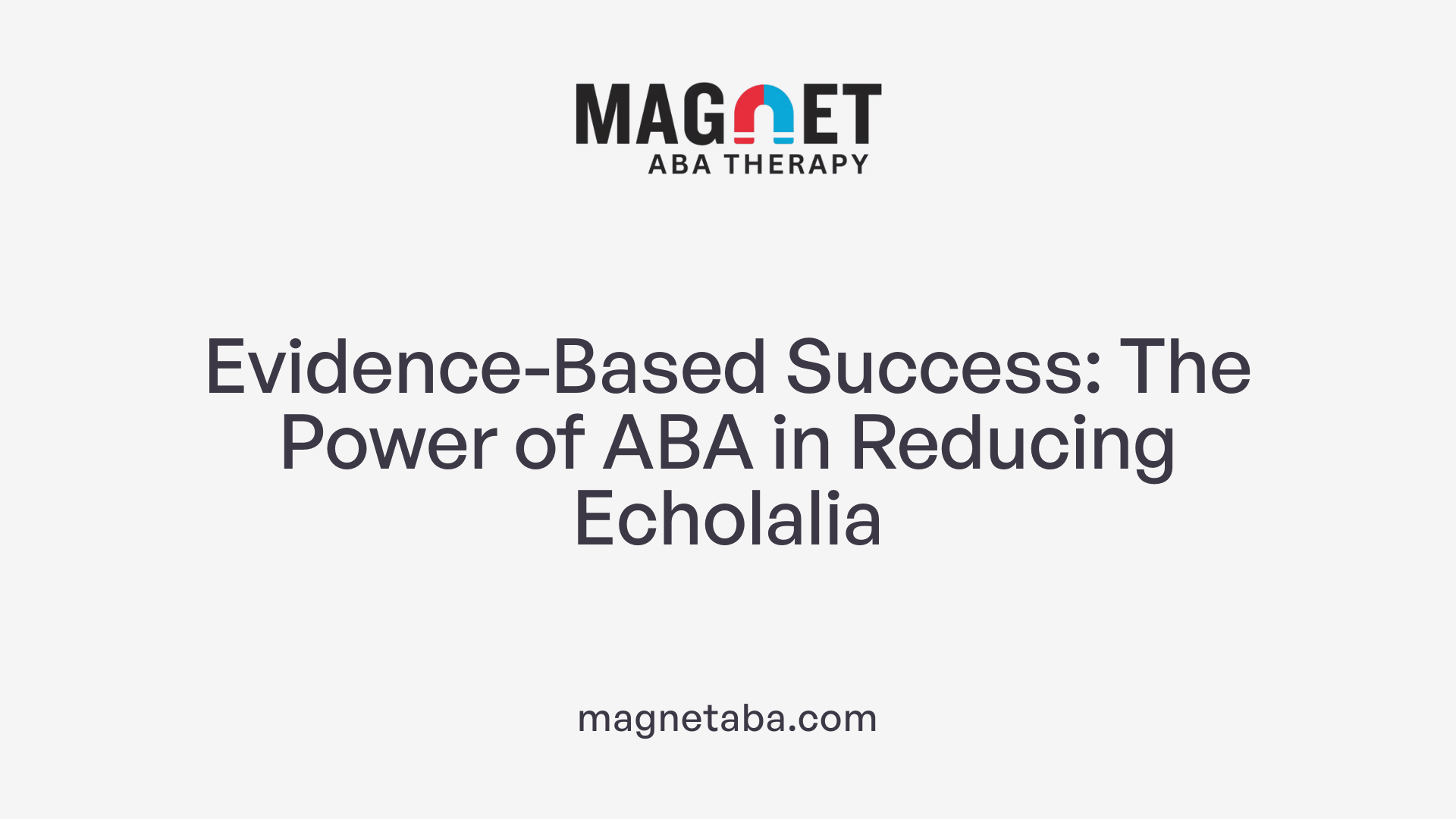Understanding Echolalia in Autism Spectrum Disorder
Echolalia—the repetition of words or phrases heard from others—is a common characteristic in the language development of toddlers. While typical children usually outgrow this phase by age three, it often persists in children with autism spectrum disorder (ASD), affecting about 75% of this population. Echolalia in autistic children can take several forms and serve a variety of communicative functions. Addressing it effectively requires a nuanced approach, combining speech therapy with behavioral interventions such as Applied Behavior Analysis (ABA). This article explores how ABA therapy helps manage echolalia in children with autism, providing evidence-based insights into intervention strategies and professional roles involved in treatment.
What is Echolalia and Its Role in Autism?

Definition of Echolalia
Echolalia is the unsolicited repetition of words or phrases that an individual has heard. It commonly appears in toddlers as a normal part of language development. However, when echolalia persists beyond the age of three, it is considered pathological and is strongly associated with autism spectrum disorder (ASD).
Prevalence in Autism
Approximately 75% of children with ASD exhibit echolalia, making it a significant behavior observed within this population. While typical echolalia decreases as language skills develop, its persistence is a hallmark feature in many autistic children.
Types and Forms of Echolalia
Children with autism may demonstrate various forms of echolalia, including:
- Immediate echolalia: Repeating words or phrases immediately after hearing them.
- Delayed echolalia: Repeating phrases after a time delay.
- Mitigated echolalia: Slightly altered repetitions that show some modification.
- Unmitigated echolalia: Exact repeated phrases without any changes.
- Interactive and non-interactive forms: Depending on whether the repetition serves a conversational purpose.
Communicative and Non-Communicative Functions
Echolalic speech in ASD is not merely repetitive but often serves important communicative functions, such as:
- Turn-taking in conversation
- Requesting objects or assistance
- Drawing attention
- Expressing emotions or self-stimulation
- Self-talk or planning
Understanding these functions helps caregivers and professionals respond appropriately to children’s communication needs and supports their language development journey.
Applied Behavior Analysis: Foundations and Approach

What is Applied Behavior Analysis (ABA) therapy and how does it help individuals with autism?
Applied Behavior Analysis (ABA) therapy is a scientific approach to understanding and modifying behavior. It focuses on applying learning principles to help individuals, particularly those with autism, acquire essential skills and reduce behaviors that may interfere with daily functioning.
ABA therapy is personalized by trained professionals known as Board Certified Behavior Analysts (BCBAs). These experts create tailored treatment plans using techniques such as positive reinforcement, which rewards desired behaviors to increase their occurrence. ABA also employs the "A-B-Cs" model—Antecedent, Behavior, Consequence—to analyze and influence actions effectively.
The therapy targets a wide range of areas including communication, social interaction, self-care, and academic skills. For instance, ABA interventions help children with autism develop spontaneous communication and manage repetitive behaviors like echolalia.
Initiating intensive ABA therapy early, typically before age four and involving more than 20 hours per week, is linked to significant developmental gains. The evidence-based nature of ABA makes it a leading intervention method in autism treatment, promoting improved quality of life and greater independence.
How ABA Therapy Addresses Echolalia in Autism

ABA Interventions Specific to Echolalia
Applied Behavior Analysis (ABA) therapy plays a crucial role in managing echolalia in children with autism spectrum disorder (ASD). Since about 75% of children with ASD exhibit echolalia, these interventions focus on promoting functional communication by reshaping repetitive speech into meaningful language use. ABA techniques target the reduction of non-communicative echolalia and encourage spontaneous verbal expression.
Use of Cues-Pause-Point Training
One ABA strategy used for echolalia is cues-pause-point training. Here, therapists give a verbal model (cue) and pause to allow the child an opportunity to respond independently rather than repeat exactly what was heard. This technique encourages the child to process the language and formulate original responses, gradually replacing automatic repetitions with intentional communication.
Script Training and Positive Reinforcement
Script training involves teaching the child useful phrases and responses in specific contexts to increase functional speech. Positive reinforcement is then applied when the child initiates or uses language appropriately, including reducing echolalic speech. This reinforcement can involve praise, tokens, or other rewards that motivate continued language growth and social interaction.
Integration in Broader Autism Treatment Plans
ABA therapy for echolalia is often part of a multidisciplinary approach involving speech-language pathologists and neurodevelopmental specialists. Within comprehensive autism treatment plans, ABA techniques complement other therapies aimed at improving communication and social skills. By focusing on evidence-based ABA interventions, therapists can help children transition from repetitive speech toward effective, spontaneous language.
Who Delivers ABA Therapy? The Multidisciplinary Team

Professionals involved in ABA therapy
ABA therapy is delivered by a dedicated team of trained professionals who specialize in behavioral analysis and autism support. The main providers include:
- Board Certified Behavior Analysts (BCBAs): These professionals design and oversee individualized treatment plans for children with autism.
- Registered Behavior Technicians (RBTs): They work directly with children, implementing ABA strategies under BCBA supervision.
- Board Certified Assistant Behavior Analysts (BCaBAs): They assist BCBAs in treatment planning and supervision.
Certifications and qualifications
All ABA practitioners hold certifications from recognized organizations like the Behavior Analyst Certification Board (BACB®). These certifications ensure that providers meet rigorous educational and ethical standards, guaranteeing quality care.
Collaboration with speech therapists and other specialists
ABA therapists work closely with other specialists, including speech-language pathologists, neurodevelopmental specialists, and therapists focused on autism. This multidisciplinary team collaborates to address various aspects of echolalia and communication difficulties, providing comprehensive support tailored to each child's unique needs. For example, speech therapists focus on language modeling and spontaneous communication, complementing the behavior-focused ABA strategies.
This collaborative approach enhances intervention effectiveness, ensuring that children with autism receive coordinated and holistic care.
Setting Goals and Measuring Progress in ABA for Echolalia
What types of goals are addressed in ABA therapy for autism?
ABA therapy focuses on personalized and measurable objectives designed to improve a child's functional skills. For children with autism exhibiting echolalia, goals often target reducing repetitive speech and promoting more spontaneous communication. These goals extend to enhancing social interaction and self-help abilities, supporting overall development.
Objectives are carefully divided into manageable steps, such as initiating requests for items or participating in peer-related activities. This structured approach enables children to achieve success progressively while fostering meaningful exchanges.
How is the progress in ABA therapy measured and adjusted over time?
Tracking progress in ABA therapy involves systematic data collection methods like recording the frequency and duration of targeted behaviors. Behavioral analysis software often assists clinicians in logging this information accurately.
The collected data offers immediate feedback, allowing therapists to recognize skill mastery or identify when modifications to intervention strategies are necessary. Automated tools facilitate smooth transitions to new skill goals, ensuring the therapy remains adapted to the child's evolving developmental needs.
Regular collaboration among clinicians, caregivers, and other professionals is crucial. Detailed progress reports promote transparent communication, enabling informed adjustments to the therapy plan and optimizing outcomes for each child.
Evidence Supporting ABA Therapy’s Effectiveness in Treating Echolalia

Scientific studies and meta-analyses
Numerous scientific studies and meta-analyses provide robust evidence supporting Applied Behavior Analysis (ABA) therapy for treating echolalia in children with autism spectrum disorder (ASD). Research shows that ABA interventions, including programs like the Early Start Denver Model (ESDM) and Discrete Trial Training (DTT), significantly improve communication skills. These therapies can reduce problematic repetitive speech by teaching functional communication and reinforcing alternative verbal behaviors.
Long-term developmental benefits
Long-term, intensive ABA programs have been associated with enhanced intellectual development, better socialization, and decreased reliance on echolalic speech. Children receiving these interventions tend to develop more spontaneous and context-appropriate communication, which improves their overall adaptive functioning and quality of life.
Role of parental involvement and individualization
Parental involvement is critical in the success of ABA therapy. Tailoring intervention programs to each child’s unique communication needs and echolalia patterns enhances treatment outcomes. Parents trained in ABA techniques can reinforce positive communication behaviors at home, ensuring consistent practice and generalization of skills.
Recognition by professional organizations
ABA therapy is widely endorsed by leading professional organizations, such as the American Psychological Association and the US Surgeon General. These bodies recognize ABA as the gold standard treatment for autism and support its use in managing echolalia along with other behavioral challenges.
| Aspect | Details | Importance |
|---|---|---|
| Scientific evidence | Multiple studies and meta-analyses confirm ABA’s effectiveness in reducing echolalia | Validates the therapy through rigorous research |
| Developmental impact | Intensive programs promote intellectual and social growth in autistic children | Supports long-term positive outcomes |
| Parental involvement | Training parents enhances consistency and individualization | Maximizes generalization and maintenance of skills |
| Professional endorsement | Backed by APA, Surgeon General, and other authorities | Confers credibility and widespread acceptance |
Comprehensive Management: Combining ABA with Speech and Other Therapies
Role of multidisciplinary teams
Managing echolalia in children with autism requires a collaborative approach involving a multidisciplinary team. This team typically includes speech-language pathologists, neurodevelopmental specialists, psychologists, therapists, and special educators. Each professional contributes their expertise to tailor interventions that address the child’s unique communication needs.
Speech therapy techniques for echolalia
Speech therapy is central to reducing echolalia and promoting spontaneous communication. Techniques often use simple phrases, short sentences, and visual cues to model appropriate language. Therapists focus on helping children recognize the meaning behind repeated phrases and encourage more functional communication.
Importance of early intervention
Early intervention with speech-language therapists and ABA therapists is critical. Starting therapy before difficulty with echolalia becomes entrenched improves outcomes. Applied Behavior Analysis (ABA) uses positive reinforcement and strategies like cue-pause-point training and script training to reduce echolalic speech and build functional language skills.
Addressing communication to prevent frustration and mental health issues
Supporting children’s communication by carefully observing and positively responding to echolalic behavior helps interpret their needs. Without intervention, communication struggles may lead to frustration, social isolation, and mental health challenges. Thus, addressing echolalia early and comprehensively promotes better long-term social and emotional well-being.
Toward Effective Communication: The Role of ABA in Managing Echolalia
Echolalia is a prevalent and complex feature in many children with autism, affecting their ability to communicate effectively. Applied Behavior Analysis therapy offers a scientifically grounded and customizable approach that focuses on developing spontaneous communication while reducing repetitive speech patterns. Delivered by a qualified multidisciplinary team, ABA therapy incorporates evidence-based strategies such as cues-pause-point training and positive reinforcement to foster meaningful language use. Alongside speech therapy and early, coordinated intervention, ABA plays a crucial role in unlocking communication potential and improving life quality for children with autism. As research advances, embracing these comprehensive behavioral strategies remains key to addressing echolalia and supporting the developmental journey of children on the spectrum.
References
- Echolalia - StatPearls
- A systematic review of interventions for echolalia in autistic ...
- Key Insights about Echolalia and Autism
- Echolalia: What It Is, Causes, Types & Treatment
- QABA: Home
- ABA Therapy Certification Explained: RBT®, BCaBA® ...
- Applied Behavior Analysis (ABA)
- Applied Behavior Analysis (ABA)
- The Top 10 Reasons Children With Autism Deserve ABA
- 6 Benefits of ABA Therapy for Children with Autism












